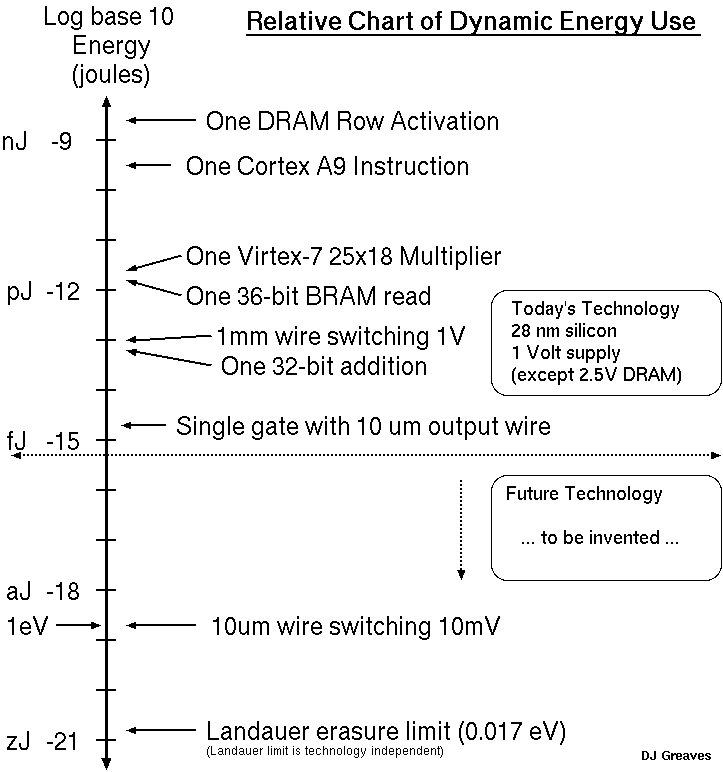
Relative chart of dynamic energy use.
There are theoretical limits on the energy an irreversible computation requires. Current technology is a long way off these in two resepects:

»Landauer worked out the miniumum energy use, in theory, for a computer that deletes data as it goes (e.g. erasing the old content of a register when new data is loaded). Computing more efficiently than this requires major low-level design changes so that information is not deleted all time, taking us towards reversible computing.
The traditional approach of wasting the energy of each transition can be countered by returning the charge to the power supply »(eg. Asynchrobatic logic for low-power VLSI design by David John Willingham, Univ Westminster, 2010) and reversible logic (eg. Toffoli logic) can get below the Landauer limit. Some standard algorithms such as encryption and lossless compression are reversible at the large - the trick is mooted to be to code in a way that does not delete intermediate results during the computation. Such techniques may be in wide use within a decade or perhaps two.
The figure above shows ballpark figures for dynamic energy use in today's (2016/2018) mainstream 28 nm silicon technology. We see that contemporary computers are about six orders of magnitude above the Landauer limit in terms of energy efficiency, so there is a lot of improvement still possible before we have to consider reversibility. (Log to base 18 months of one million is roughly 30 years, so 2050 is the reversible computing deadline.)
| 4: (C) 2008-18, DJ Greaves, University of Cambridge, Computer Laboratory. |